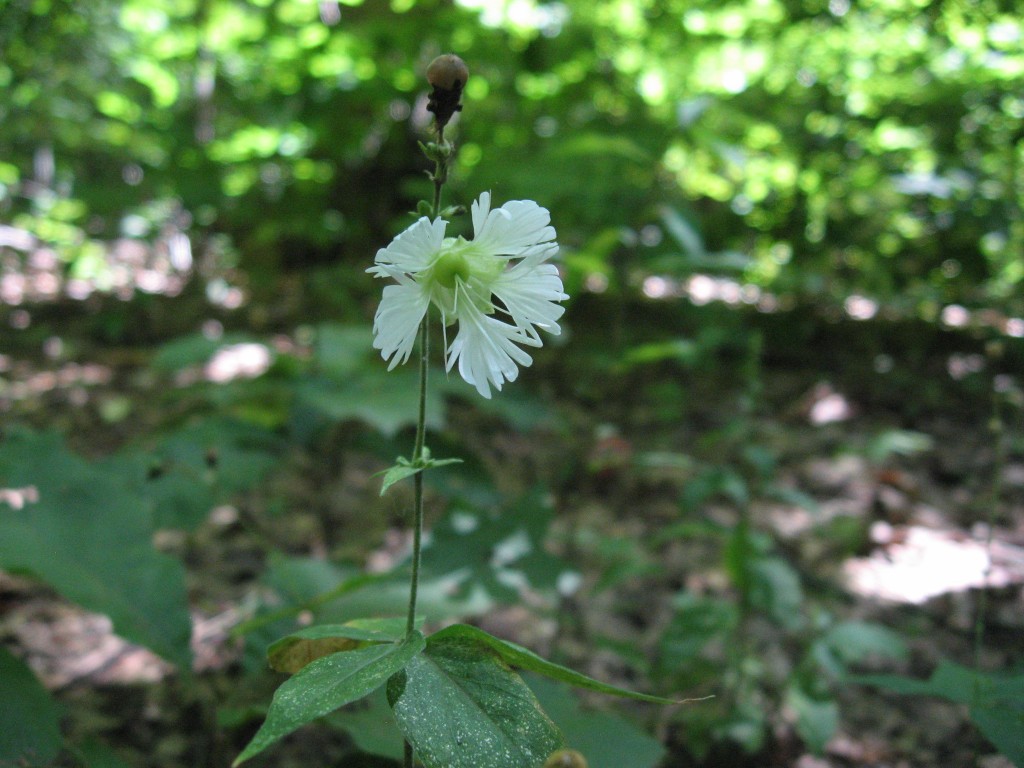
- Silene stellata
- This flower has been blooming for weeks now. Â This is great for the middle of the summer. Its still flowering even while producing seed, as can be noted just above the flower. Â An elegant plant with a whorl of leaves on a straight stem, not too tall, about 15 inches high. Â Bloom bloom bloom. Â This plant is in the business of blooming. Â
- It is picky too. It likes upland sites that are not disturbed and full of sun-blocking invasives. Â It likes the light of tall oaks, a filtered sun. Â It fits right in at the Lookout at the end of the Morris Park Road trail. This is a section of high-quality forest with a great species diversity, Mature trees and various native shrubs.
- Every day this August this plant  has been blooming, now on both sides of the path. There is a nice patch growing at the foot of a Red Maple tree. Even the leaves are starting to get beaten up, and yet it continues to bloom.
- Â



… brings to mind that extraordinary exchange in The Winter’s Tale: 4.4 80-99
They’re discussing Perdita’s garden… why she neglects the ‘bastardization’ of her carnations by streaked gillyvors…
Perdita: For I have heard it said/ There is an art that in their piedness shares / With great creating nature.
Polixenes: Say there be/ Yet nature is made better by no mean/ But nature makes that mean. So over that art/ Which you say adds to nature is an art/ That nature makes. You see, sweet maid, we marry/ A gentler scion to the wildest stock,/ By bud of nobler race. This is an art/ Which does mend nature–change it rather; but the art itself is nature.
Perdita: So it is.
Polixenes: Then make your garden rich in gillyvors/
And do not call them bastards.
Did Gregor Mendel read Shakespeare? Whether he did or not, we see how a fundamental understanding can exist, and pass for generations and centuries–waiting for a monk in his garden to observe and describe in such a way that it becomes transformational–a concept embedded in material reality such that in itself… it will forever after… have power to make a difference. And all along… the art of seeing…itself was natures.
Thank-you Jacob. Your literary references are definitely adding flavor and an inspiring dimension to the Sanguine Root. Our adventures in learning about nature have brought us many places, much of them unexpected, some arrive like sheet music, like when the Chestnut tree that bloomed this spring had its entire top die off a month later. Everything we have learned in the sciences is constantly put to the test. In fact it is in science we discover information that is useful. Our creativity is needed when we want to convey this information to folks, so we can get them engaged with the subject of nature, so they do their own informed explorations, and make their own discoveries.